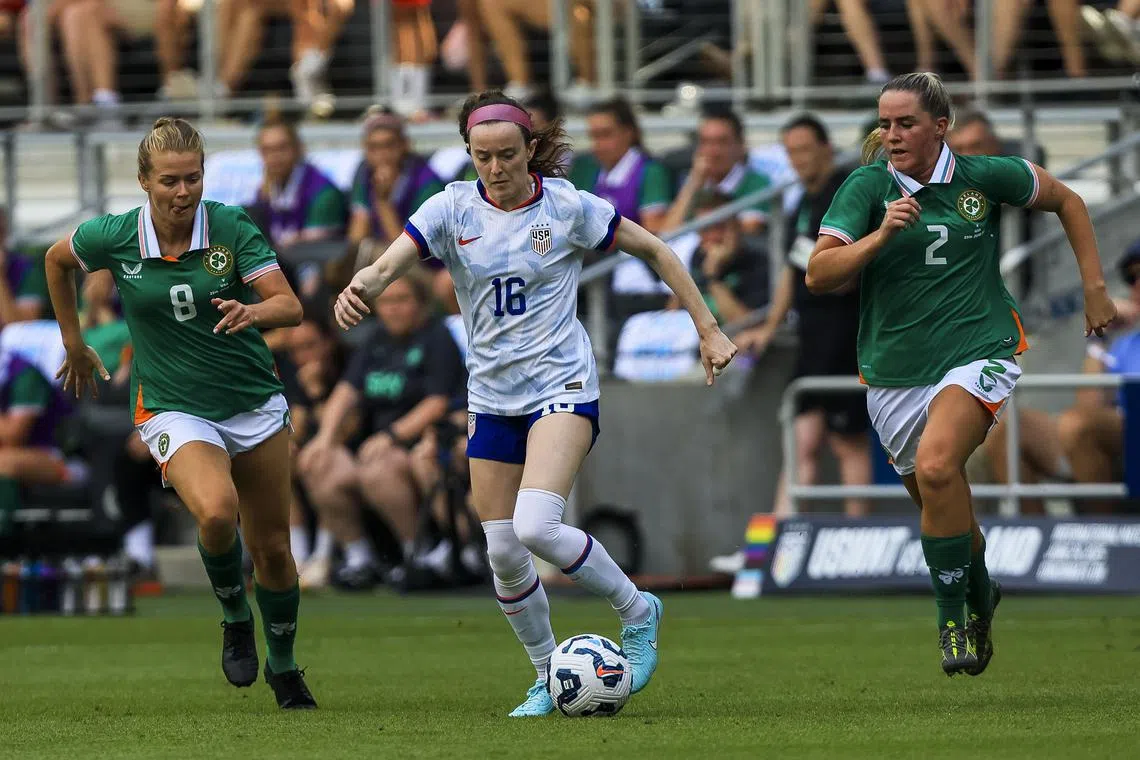Experts call for focus on risk factors to reduce ACL injuries in women’s game
Sign up now: Get ST's newsletters delivered to your inbox

There is scant research on ACL injuries in professional women's football.
PHOTO: REUTERS
Follow topic:
LONDON – Breaking the cycle of anterior cruciate ligament (ACL) injuries in women’s football requires a shift in the conversation away from biological differences such as wide hips and hormonal fluctuations during menstruation, according to experts.
Instead, the focus should be on risk factors that can be controlled, they say.
The Women’s Euro 2025, which kicked off on July 2, will be without Swiss striker Ramona Bachmann who will miss the tournament hosted by her country after tearing her ACL less than three weeks ago, underscoring the devastation the knee injury can cause in the women’s game.
While studies show women are up to eight times more susceptible to ACL tears than men, there is scant research on the injury in professional women’s football.
“We want to move away from these kinds of stereotypical views that women are just more susceptible to it because of the way that their bodies are,” said Alex Culvin, head of strategy and research for women’s football at global players’ union Fifpro.
“They can’t take the high workload – all of these are quite nonsensical, illogical, overly feminised ways of looking at ACL injury.
“We really want to home in on things that we can affect.
“We can’t change women’s physiologies, but what we can change, adapt and improve are the conditions in which ACL injuries occur.”
Culvin, a lecturer at Leeds Beckett University, is part of Project ACL – a three-year study launched by Fifpro, the Professional Footballers’ Association, Nike and Leeds Beckett with the Women’s Super League.
There is interest in expanding the study to other women’s leagues around the world.
“Obviously you’ve got non-modifiable risk factors, which are predominantly physiological.
“But you’ve also got modifiable risk factors – things like the calendar, number of games, travel and then actual physical environments that players play in, including their working environments.
“That’s what our focus is,” she added.
Culvin is calling for minimum standards across the women’s game to eliminate risk factors in the working environment, in areas such as access to physiotherapy and pitch condition.
“We want to gather as much data around these environmental risk factors as possible and start to build out an evidence base that’s not been built before on ACL injury,” she said.
Dale Forsdyke, a lecturer in sports injury management at York St John University in England, said psychological factors also had to become part of the conversation around injury.
“We often forget footballers are human, and we forget that the life stresses that they’re exposed to can be really significant. What does it do to their bodies?” he said.
“We know that it alters their stress hormones.
“We know that it can impair muscle repair from physical load, and it can give them some peripheral narrowing, so their attentional focus is affected.
“There’s obviously a behavioural mechanism with stress – if I can’t deal with these stresses, then that’s going to impact my sleep quality and quantity.
“And we know that sleep (is important) as a recovery strategy.”
Forsdyke spoke about psychological risk factors in injury to more than 500 medical professionals at the ninth Uefa Medical Symposium in Lugano, Switzerland, in February.
The symposium’s focus for the first time was on women’s football.
Uefa’s chief medical officer, Zoran Bahtijarevic, who hosted the symposium, appealed to coaches at all levels to learn about preventative programmes in order to help reverse the ACL trend in the women’s game.
Fifa 11+, a warmup programme aimed at preventing injuries, is one of the resources available to coaches.
“We need the attention of coaches. We need the attention of parents,” he said.
“Coaches have a great responsibility to educate themselves, to establish healthy habits of preventive exercises. We want to make it a continuous effort to educate everybody involved that prevention is possible.
“So my advice is start doing this... prevention starts with you.
“Every Cristiano Ronaldo was once a grassroots player. Prevention starts there.” REUTERS

